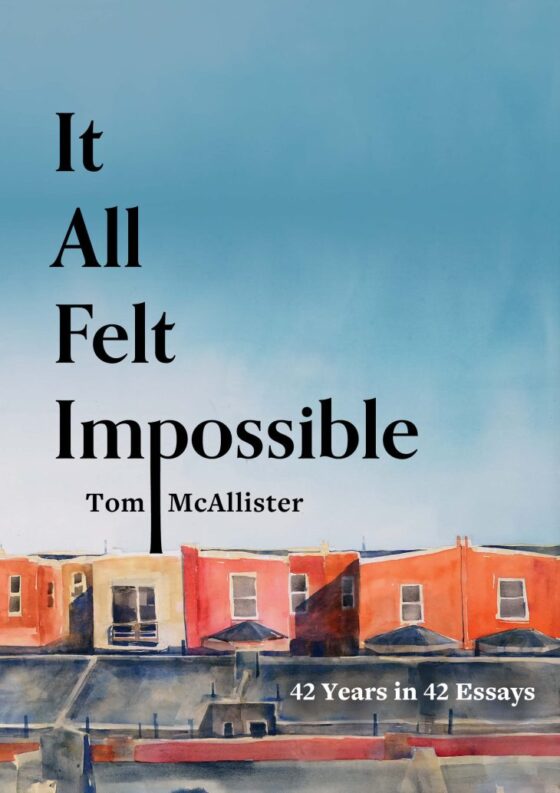 If you live in San Francisco you’ve probably seen the signs on storefronts and taxis—the posters eye-catching and cryptic: War Music, flanked by a wing and a gun. I chased down this production, appearing at San Francisco’s American Conservatory Theatre (A.C.T). Under the direction of Lillian Groag, A.C.T has undertaken a staged adaptation of The Iliad. I’m always happy when poetry temporarily reclaims its epic throne, but the results are often disappointing. If an epic poem makes its way into film or theater, it usually arrives stripped of its poetry, substituted with bare breasts, flexed muscles, and Matrix-inspired fight scenes. Think Brangelina, scantily clad, in Beowulf and Troy.
If you live in San Francisco you’ve probably seen the signs on storefronts and taxis—the posters eye-catching and cryptic: War Music, flanked by a wing and a gun. I chased down this production, appearing at San Francisco’s American Conservatory Theatre (A.C.T). Under the direction of Lillian Groag, A.C.T has undertaken a staged adaptation of The Iliad. I’m always happy when poetry temporarily reclaims its epic throne, but the results are often disappointing. If an epic poem makes its way into film or theater, it usually arrives stripped of its poetry, substituted with bare breasts, flexed muscles, and Matrix-inspired fight scenes. Think Brangelina, scantily clad, in Beowulf and Troy.
Groag’s production of War Music (running just around 2 1/2 hours, through April 26th) stages Christopher Logue’s account of the Trojan War. Logue has adapted, piecemeal and in non-chronological order, sections of The Iliad over the last 28 years. Logue captures the power of his source text: rendering both the extravagance and tedium of warfare into modern, idiomatic language. Take, for instance, his stunning depiction of Patroclus in battle:
“His head thrown back, his mouth—wide as a shrieking mask—
Sucked at the air to nourish his infuriated mind
And seemed to draw the Trojans onto him,
To lock them round his waist, red water, washed against his chest,
To lay their tired necks against his sword like birds.”
 War Music (1981), the first of the series and the book from which the play takes its names, focuses only on books 16-19 of the Iliad: the death of Patroclus, Achilles beloved friend, and Achilles’ subsequent return to the war, which marks the beginning of the Greek’s victory over the Trojans. These books, also known as the Patroclei, serve as the production’s climax.
War Music (1981), the first of the series and the book from which the play takes its names, focuses only on books 16-19 of the Iliad: the death of Patroclus, Achilles beloved friend, and Achilles’ subsequent return to the war, which marks the beginning of the Greek’s victory over the Trojans. These books, also known as the Patroclei, serve as the production’s climax.
Groag’s War Music traces the story as we know it: the beautiful Helen, wooed away from her husband by the vain and handsome Paris, takes up residence in Troy, inciting the Greeks to declare war in the name of revenge. This is what we usually remember when we think of the Trojan War, but it is not Helen who is the protagonist of the Iliad, but rather Achilles, the statuesque demigod who effectively serves as the Greeks’ weapon of mass destruction. Offended early on by King Agamemnon, who takes his best slave girl (stealing, literally, his booty), Achilles withdraws from the battlefield. The plot behind these events is more complex; but the important thing, and one that Groag highlights, is Agamemnon’s refusal to admit his mistakes which curses the Greeks to failure.
The resonance with the Bush Administration’s stance on the Iraq war is profound. To Groag’s enormous credit, she trusts her audience to make the connections. Instead, Groag emphasizes Logue’s poetry in War Music. It’s a bold and successful choice. The ensemble cast handles the poetry as deftly as they move between parts, each member assuming several roles–a directorial choice that stresses a sense of history, that the story of war belongs not to a few, but to the many.
Daniel Ostling’s set is minimal and dynamic and evokes a sense of suspension, of life halted by ten long years of war. The stage arcs gently upwards on both ends, simultaneously evoking a valley, a cradle, and a ship. A massive spherical cutout dominates the backdrop, and serves, at various times, as sun, moon, telescope, and shadow puppet screen. During much of the action, the circle holds a miniature Troy set upon what looks like a folding table. The choice ingeniously renders Troy as a diminutive version of itself—somewhere between a shining city on a hill and a Mr. Roger’s castle. Troy is suspended against the sky, and we view it as the gods glimpse it: far, tiny, vulnerable.
If War Music disappoints, it does so by skirting a full commitment to this vulnerability. This happens primarily in the production’s approach to violence. Both Homer and Logue devote their unflinching attention to the gruesome realities of war. Violence is the fabric of the action, the thread that binds together hundreds of characters. Everything depends upon it. Sure, depicting the relentless skull-splitting and bowel-ripping of the original texts might prove a ridiculous feat for the stage, and one potentially as gratuitous as much of our cultural fascination with violence. But The Iliad is a tale of great human suffering— for Greeks and Trojans alike. No discovery occurs without violence; every human exchange, whether on or off the battlefield, responds to its pressure.
Groag’s stylized depiction of violence renders it absurd, even ironic– blasting death metal, censoring it with vaudevillian dance. The duel between Paris and Menelaus, for example, is obscured from the audience by the duel’s spectators. The intention is to heighten the effect of Logue’s poetry, but violence consistently depicted by way of stylized acting renders it impotent. It no lingers resonates, but strikes the audience as clever, artful, even polite.
War Music, despite it innovation, takes few risks. Any depiction of war should require the audience, at some point, to fight the urge to turn away. Groag coddles her audience. I felt this resistance most strongly in the scene after Patroclus’ death, the play’s turning point. Patroclus’ broken body is returned to Achilles. Groag chooses, wisely, to drastically alter the register of the production, here. Everything becomes quiet. Achilles cradling Patroclus’ body, both men swaddled only in linen briefs, evokes the image of a Pieta: a limp, near-naked body held in another’s arms. The scene would be beautiful if it weren’t for Groag’s insistence on making it so artful: everything moving at half-speed, Patroclus’ spirit slowly exiting in a languid ballet. It’s too much. And yet, not enough, somehow–the real sorrow of the moment lost to affectation. And ultimately, the scene resounds as a missed chance to better know the story’s hero.
That said, War Music has much to offer its audience. When it hits, it hits, and these moments alone are worth the ticket. The play’s final tableau is stunning: Achilles is lifted in full armor onto the shoulders of his fellow soldiers and held against a blood-red sky in anticipation of battle. Draped in gleaming metal, his face hidden, Achilles assumes the role of hero, a dazzling weapon. (One can’t help but think of the awful elegance of an un-launched missile.) The moment is simultaneously grand, weary, disturbing, and ominous, and the image lingers for days.
**




